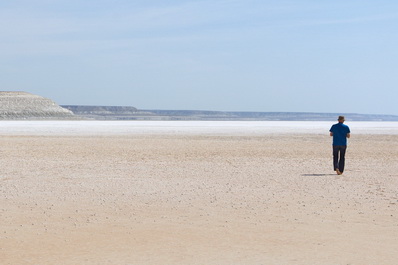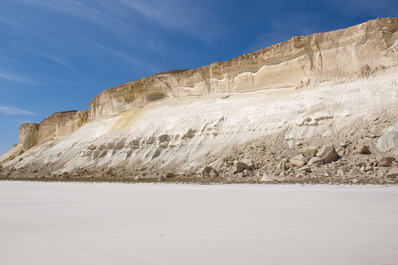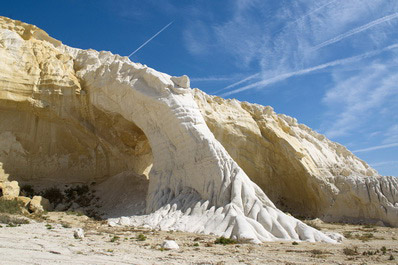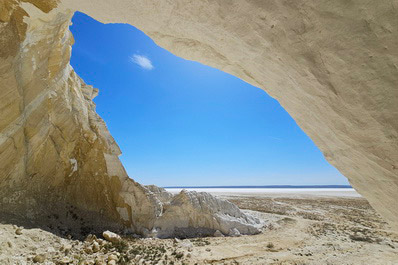Tuzbair Salt Marsh, Mangystau

Tuzbair is a fantastic spot for capturing amazing photos of your trip to Mangystau. This enormous white surface, spanning 15x4 kilometers, lies beneath the picturesque white cliffs of the Ustyurt Plateau. The salt field stretches beyond the horizon and, on a hot day, creates mirages that resemble a lake. The 60-meter cliffs above it are adorned with patterns and shapes sculpted by wind and water over millions of years.
The cliffs above Tuzbair date back tens of millions of years and were once the bottom of the ancient Tethys Ocean. Today, you can find small shark teeth and sea urchin skeletons in the scree beneath the plateau, although these treasures are often hidden under a thin layer of white dust and mud.
Tuzbair is especially beautiful in the spring after rain when a vast mirror of water forms. Even in dry weather, the ground has a viscous texture that softens as you move away from the Ustyurt Plateau walls. It's best to walk on the salt flats barefoot or in rubber boots and avoid driving an off-road vehicle too deep into the salt marsh to prevent getting stuck. Keep within 200 meters of the rocks and follow the tracks of previous travelers.
A local highlight at Tuzbair is "The Arch", a natural chalk archway formed by the collapse and erosion of neighboring rocks. The passage is over 15 meters high, and you can walk through it, although it requires some skill.
In summer, the salt marsh is very hot and bright, while winter brings strong winds and steppe frost. Therefore, the best months to visit Tuzbair are April, May, September, and October. Even during these comfortable months, sunglasses are essential as the white field and cliffs are dazzling year-round.
Tuzbair salt marsh is one of the most remote sights in Mangystau. To get there, you need to drive 270 km northeast of Aktau, with the last 40 km being a decent dirt road with several drops. However, Tuzbair is usually included in a larger tour of Mangystau, and visitors often see this fantastic place after an overnight stay near Sherkala Mountain or the Airakty Valley of Castles, reducing the drive to only 150 km.






